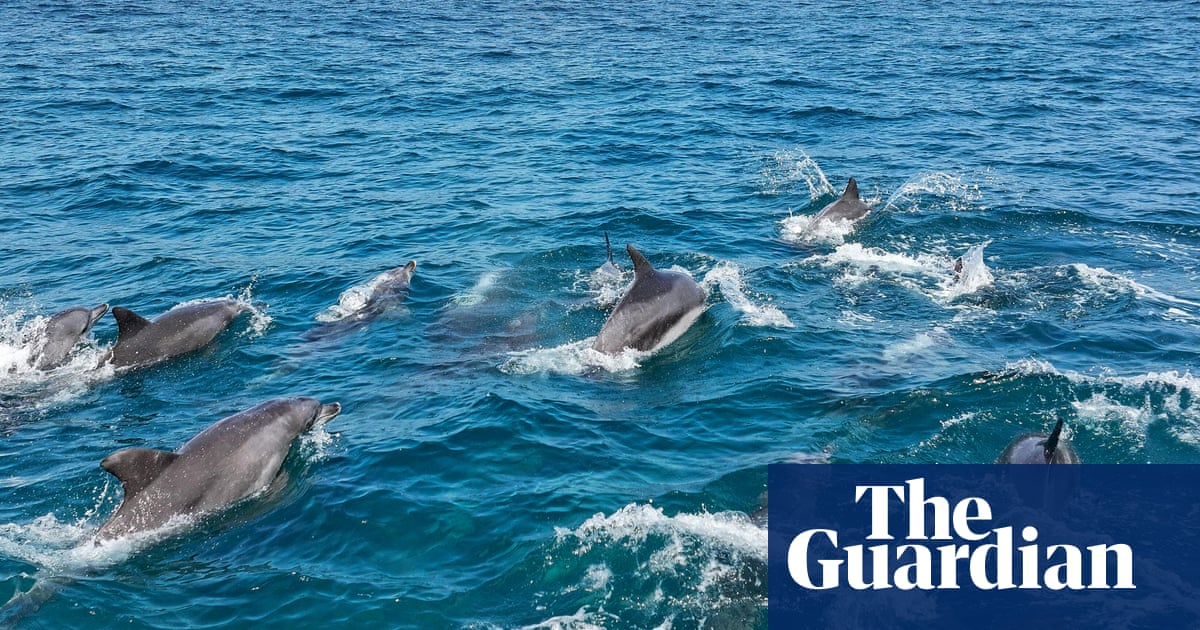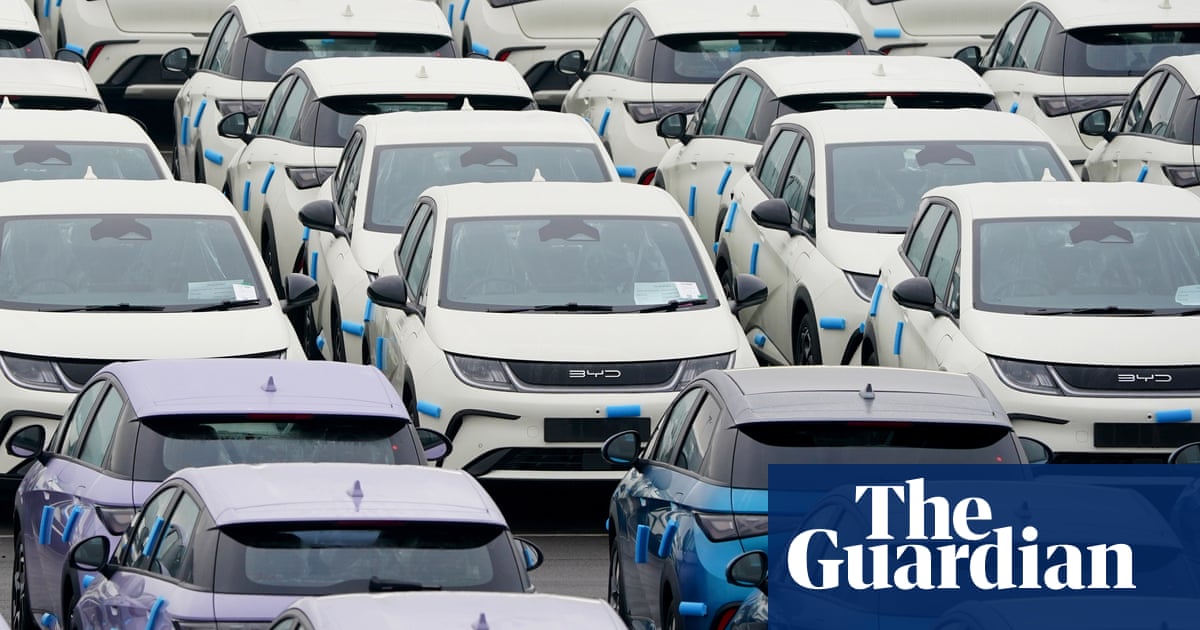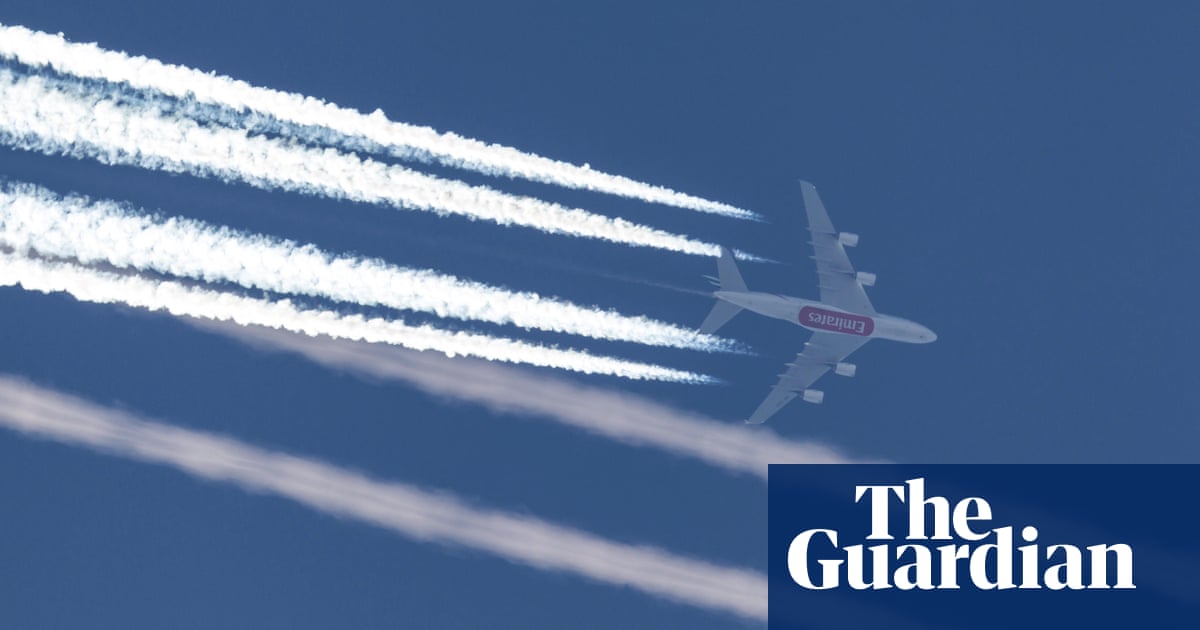Australia’s emissions up slightly in 2024 as Labor faces heat over ‘climate-wrecking’ gas project | Gas

Australia’s climate-heating emissions increased fractionally last year as pollution from fossil fuel power plants rose for the first time in a decade, and domestic air travel and use of diesel-powered cars and trucks hit record highs.
The jump in emissions was small – just 0.05% – due to falls in pollution from other sectors. But the direction was at odds with the Albanese government’s pledge to cut pollution to reach targets for 2030 and 2050.
The data was released on Friday, two days after the environment minister, Murray Watt, announced he planned to approve a 40-year life extension for one of Australia’s biggest fossil fuel developments – Woodside Energy’s North West Shelf liquified natural gas (LNG) processing facility in the Pilbara.
Based on the Burrup peninsula, in Murujuga country, the North West Shelf is Australia’s third biggest industrial polluter, responsible for about 1.4% of the country’s annual climate pollution.
The prime minister, Anthony Albanese, has rejected concerns about the facility’s emissions continuing for decades after 2050, saying the national goal was “net zero, not zero”, implying ongoing fossil fuel use could be justified by using a contentious carbon offset scheme. His comments echoed language used in 2021 by the Coalition’s then emissions reduction minister, Angus Taylor, when defending climate policies under Scott Morrison.
Rising electricity use
The quarterly greenhouse gas inventory said the increase in national emissions last year may be short-lived, with preliminary data suggesting they fell in the first quarter this year.
Emissions last year were estimated to be 446.4m tonnes of carbon dioxide, 0.2m tonnes higher than in 2023. The increase is largely due to pollution from electricity generation rising by 2.2%, reversing a 10-year trend. Australians used more electricity overall, and there was less hydro power available than usual during winter. Solar use was up, but the extra demand was otherwise met by more coal and gas.
Initial data for the March quarter suggest the long-term trend of pollution from electricity falling should restart this year. This has been backed by a separate report by the Australian Energy Market Operator.
At the end of last year emissions from power generation was 23.7% lower than in 2005. Experts expect it to continue to fall as a government underwriting program announced in November 2023 supports an influx of new large-scale solar, wind and batteries.
But emissions from transport continue to surge as Australians fly more and burn more diesel in bigger cars and trucks. Pollution from the transport sector was up 1.9% last year. It has skyrocketed 20.8% since 2005.
Vehicle efficiency standards introduced last year require auto companies to reduce the average pollution from new cars each year, but they are expected to only gradually affect total transport emissions.
‘More to do’
Government officials estimated national pollution was 27% below 2005 levels, largely due to a change in the amount of carbon dioxide that is absorbed by the land and forests. The Albanese government has a legislated target of a 43% cut by 2030 and has promised a 2035 target later this year.
The climate change and energy minister, Chris Bowen, said Labor was on track to reach the 2030 target but there was “more to do” to get there.
after newsletter promotion
“Industrial emissions are now lower than they were during Covid-19, even as the economy has recovered,” he said. “We need to keep going, and ensuring we’re delivering downward pressure on emissions across the economy.”
The Greens leader, Larissa Waters, said Labor had failed two climate tests: pollution was going up, and it had approved the “climate-wrecking North West Shelf dirty gas extension”.
“During the last term of parliament Labor approved over 30 new coal and gas projects and it doesn’t look like they’re slowing down any time soon,” she said.
Global ‘LNG glut’
Albanese this week defended the North West Shelf extension by saying gas was needed along with batteries and pumped hydro storage to “firm” renewable energy generation in the electricity grid. The government’s target is that 82% of electricity will come from renewable energy by 2030. “You can’t have renewables unless you have firming capacity. Simple as that,” Albanese said. “You don’t change a transition through warm thoughts.”
Asked about the WA development, Albanese said the Tomago aluminium smelter in New South Wales’ Hunter Valley relied on gas to firm renewable energy, and WA’s main electricity grid would become more reliant on gas as the state closed its remaining coal-fired power plants.
The prime minister did not say how much gas from the facility was destined to be used in Australia. According to analysis of recent data, the overwhelming bulk of the gas produced on the North West Shelf and elsewhere in WA – 81% – was exported. Another 7% was used by the gas industry as part of the production process. About 8% was used for gas-fired electricity generation in WA. None was used at Tomago.
Critics have challenged the economic and climate basis for a decades-long extension of the processing facility’s life. Alex Hillman, from the Australasian Centre for Corporate Responsibility and a former Woodside Energy climate change adviser, said analysts from the International Energy Agency had projected the world was heading for an “LNG glut” later this decade.
“There is no commercial justification to add further LNG supply, and there is certainly no climate justification,” he said. “Whilst there is major flooding in New South Wales and a major drought in South Australia, these are emissions that are going to cause Australians and investment portfolios further harm as the physical impacts of climate change increase.”
Source link






